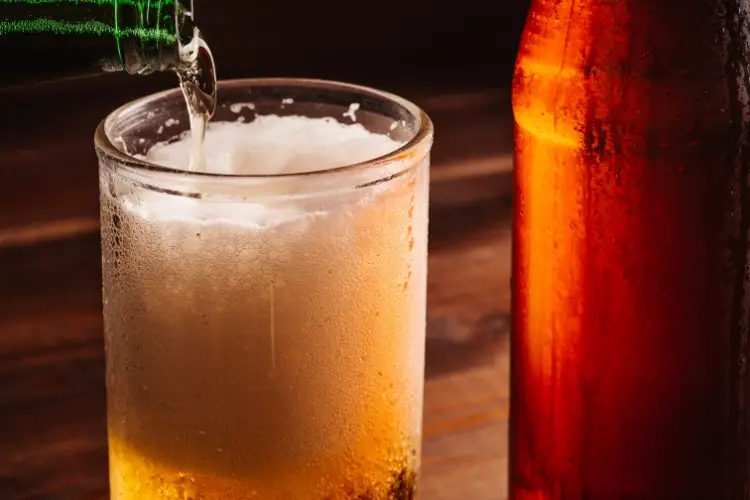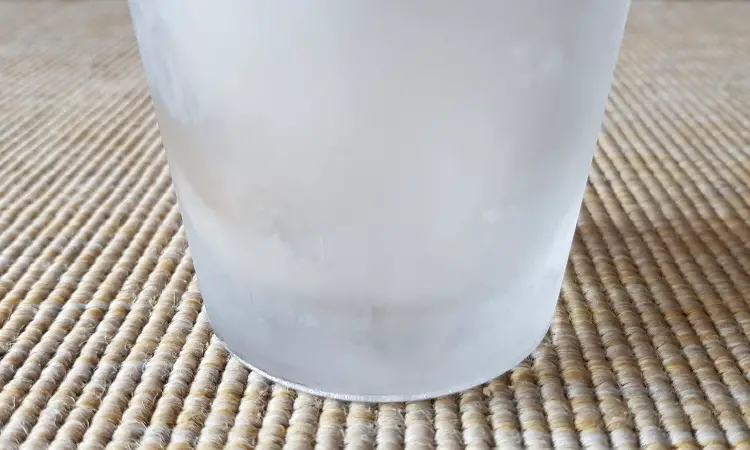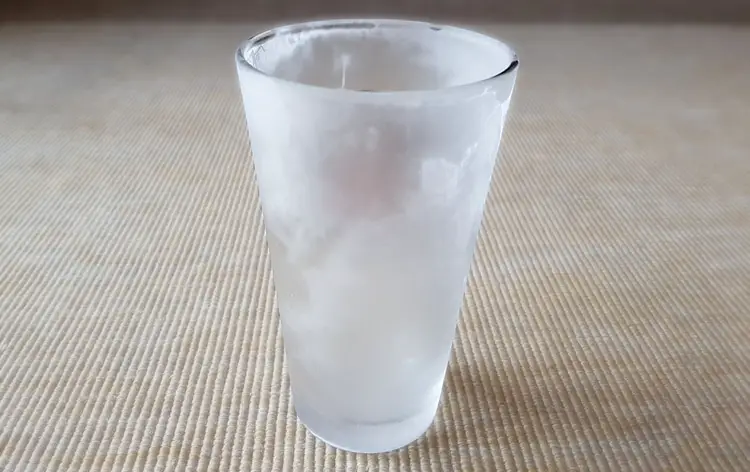As more restaurants and bars are adding craft beers to their menus, serving is vital. With these specialty beers, if they are not served properly, it can take away from their flavor and texture.
By altering the smells and taste of each craft beer, serving methods are important for the success of each craft beer and the enjoyment of the consumer.
Most beer experts advise against serving beer in a chilled glass as the increased condensation produced can dilute the beer. This is primarily because of the temperature the beer must be stored to keep it fresh for longer. Room temperature glasses are preferred for craft beers to maintain optimal flavor and smell.
In order to maximize the flavor and smell of each beer being served, it is important to understand the dos and don’ts of serving craft beers.
In this article, we will talk about the pros and cons of using a chilled glass to serve craft beer and the ideal serving guidelines to maximize the flavor profile of each beer you are offering.
Should Craft Beer be Served in a Chilled Glass?
Ideally, craft beer should be served between 38 degrees and 44 degrees Fahrenheit (between 3 and 7° Celsius) in a room-temperature glass.
This is recommended as it delivers the best taste experience not only for craft beers but for the majority of beer styles!
There are a few reasons who craft beers and not recommended to be served in chilled glasses, including:
- Unproportionate foaming
- Reduced flavor
- A change in the flavor and smell of the beer
With all of these factors combined, by serving in a chilled glass, you may effectively be changing the entire flavor profile and consistency of the beer you are serving.
This can impact the way consumers feel about each beer and can, in turn, affect sales of your craft beers.
Foam

While the foam produced by pouring a beer is highly dependent on the kind of beer and each individual beer, there are some trends in foam consistency and abundance according to the temperature of beer and glass when being served.
While certain beers may foam a decent amount in room temperature glasses still, this is primarily common in highly carbonated beers that experience excessive foaming in general.
Foam is increased among all beers when in a cold glass due to the rapid release of CO2 when the beer comes in contact with a cold glass surface.
Unfortunately, as most know, the more foam in the glass, the less beer you are getting!
Not only does the presentation of the glass look off and appears as an improper pour, but there is less liquid per glass.
This is a major downfall for consumers and can make or break an establishment.
If consumers feel taken advantage of, they will not return.
Flavor Profile
For all the beer connoisseurs out there like us, the taste of each beer is important!
Unfortunately, when beer is served at such cold temperatures, our taste buds are unable to fully taste what we are drinking.
By serving beer at almost frozen temperatures, taste buds are dulled and therefore mistake blinded taste buds for a bland beer.
For many craft beers, brewers put a lot of research and care into the flavor profiles and subtle ingredients in their beers in order to stand out from the rest and offer a unique taste experience.
When these beers are then served at such low temperatures, all of this work goes to waste as those who are consuming their brews cannot taste the depth of each beer.
Unfortunately, this does not end here when it comes to frozen glasses!
As these chilled glasses begin to melt, they alter the flavors and scents of each sip. This is in part due to the beer being watered down by excessive condensation.
In addition, any glass that is put in a freezer gathers contaminated liquid and freezes it to itself.
As this liquid melts into your beer, these tastes begin to show up in the palette of the beer; and because the majority of these particles are made up of cleaning solutions, sanitizers, or dirty rinse water, this can be an unpleasant addition to your drink.
How Smell Impacts Beer Tasting

Not only do freezer particles impact taste, but they also alter the smell of each beer.
The majority of our taste buds work in collaboration with our sense of smell. Therefore, we taste the things that we smell, and without smell, the taste is diluted.
Ice crystals from the freezers that chill glasses are able to pick up the odor of the freezer or anything that has been placed in the freezer.
This added smell, in addition to the altered taste, change the entire profile of the beer that is being consumed.
Once again, with these smells that brewers did not account for in their beers, it creates a potentially unpleasant tasting experience.
Therefore, even for those who are not chilling their glasses, it is critical that you are staying very conscious of where your glasses are being stored and how they smell before putting any beverage into them as they can have huge impacts on the experience of your customer.
This can impact sales and business success in the long term.
Are There any Benefits to a Chilled Glass?

For those who are still leaning towards a chilled glass, the only benefit you will find here is in keeping your beers cold for longer or chilling them if they have not been properly chilled prior to serving.
Many will try serving in chilled glasses due to cans or bottles not being chilled to the right temperature prior to serving and seeing a chilled glass as better than a warm beer.
The best way to avoid having to chill glasses at all is to ensure beers that are being served are chilled to between 38 and 40° F (3-4° C) prior to serving.
This will keep them cool for the longest amount of time while maintaining optimal taste and smell.
For those who are not serving craft beers, keep in mind that the same information is true of other beer types.
Although some beers have a more one-dimensional flavor palette or less taste in general due to being a more generic brand, you will still find less flavor and more encroaching flavors and smells if you are opting to serve your beers in a chilled glass rather than a clean and dry room temperature glass.
Final Thoughts
Whether you are a craft beer brewer, own a bar, or simply enjoy drinking craft beers from the comfort of your home, the way you are serving is critical.
For many smaller craft breweries, if their beers are consistently served incorrectly, they will lose clientele and popularity, which can majorly impact the diversity of beers on the market.
Rather than chilling glasses moving forward, be sure to take extra care of what temperature your kegs or individual servings of beer are being stored at so that consumers can have the best experience possible with each craft beer they consume.
This will benefit breweries in the long term and benefit each establishment that takes up this practice.
Bars and restaurants who serve beer correctly will find that consumers are happier with the quality of their pours and the quality and diversity of beers that are offered in each establishment. This is a simple way to gain more loyal clientele and bring in more customers through positive reviews and word of mouth.
